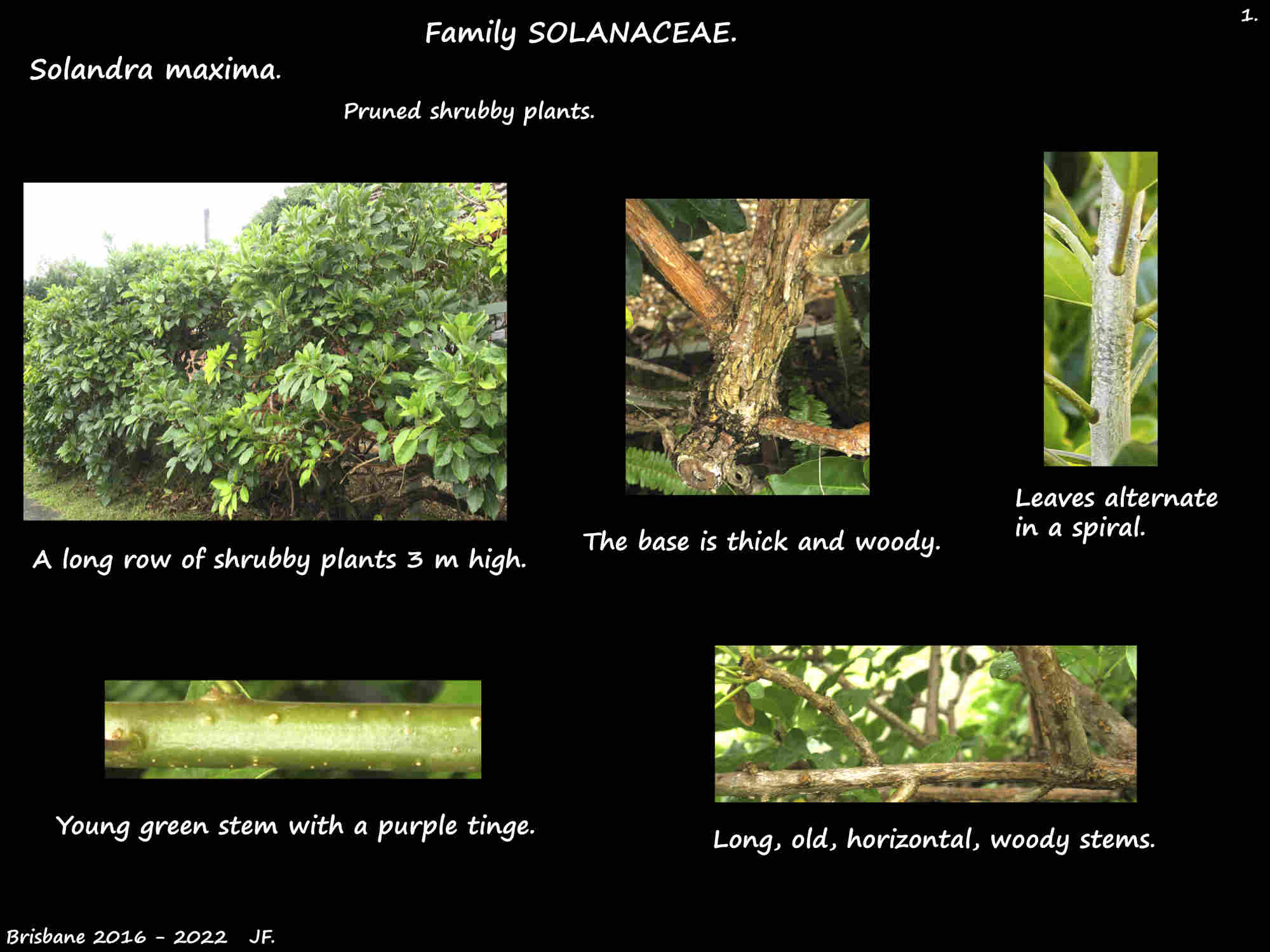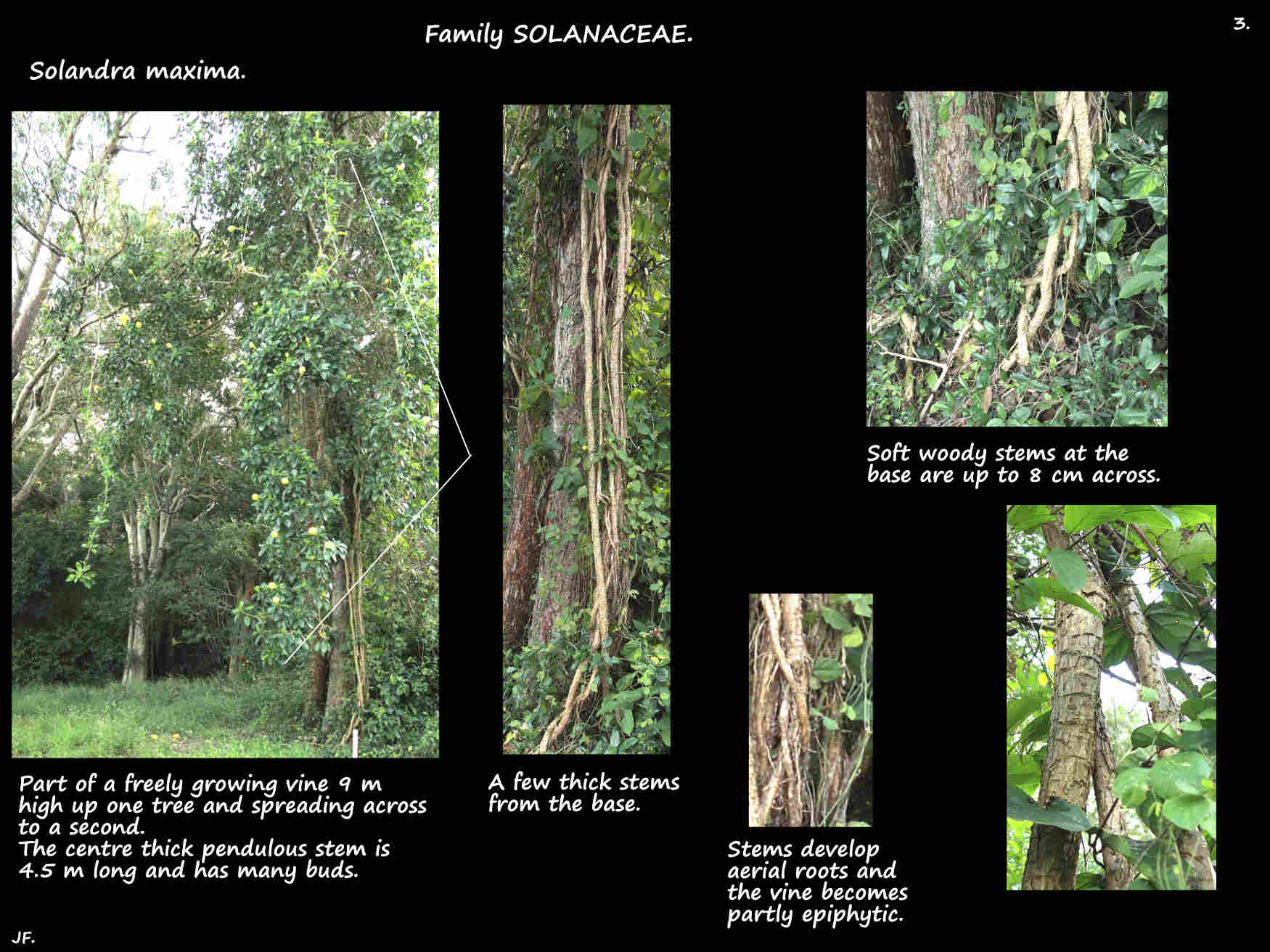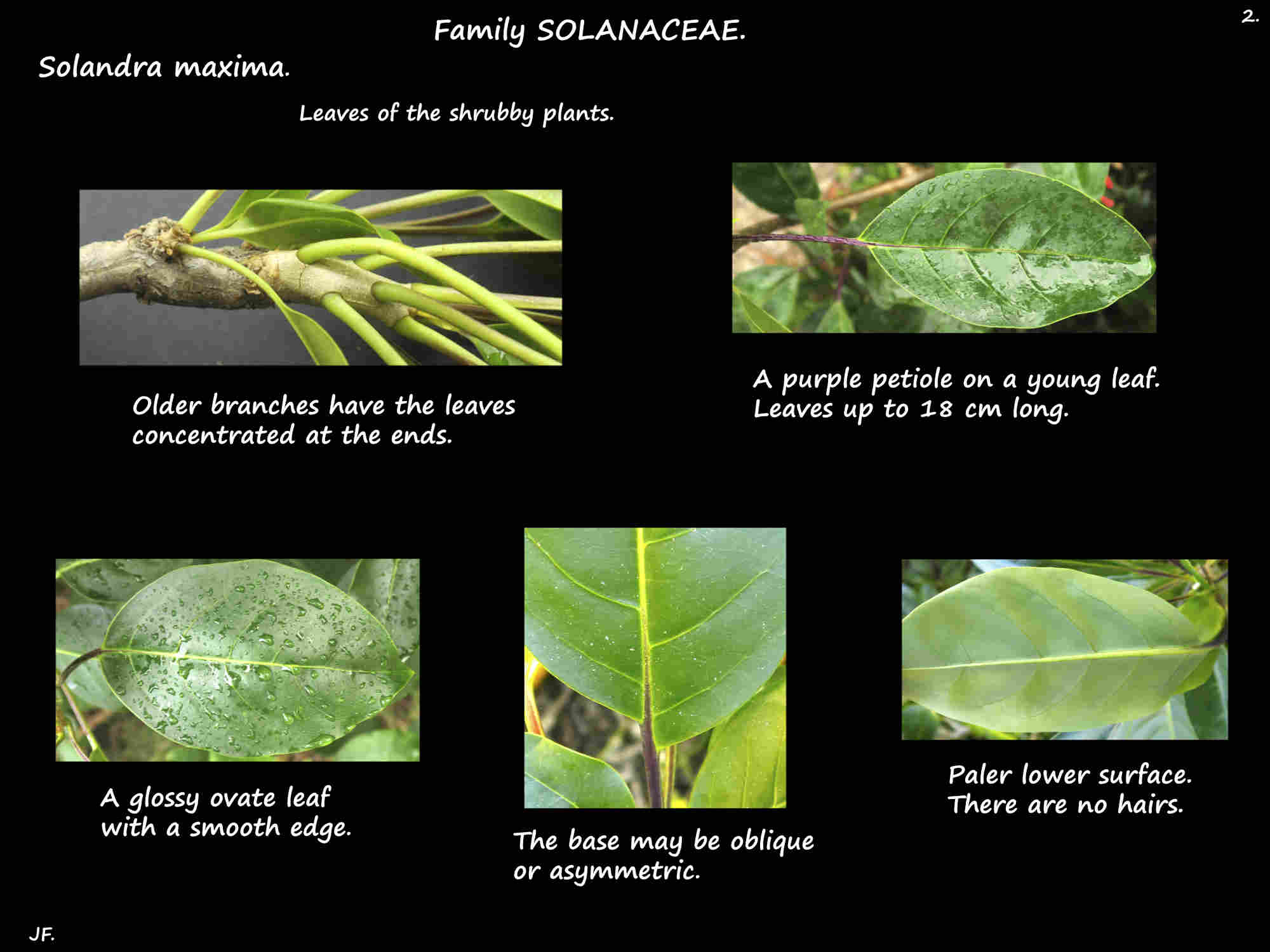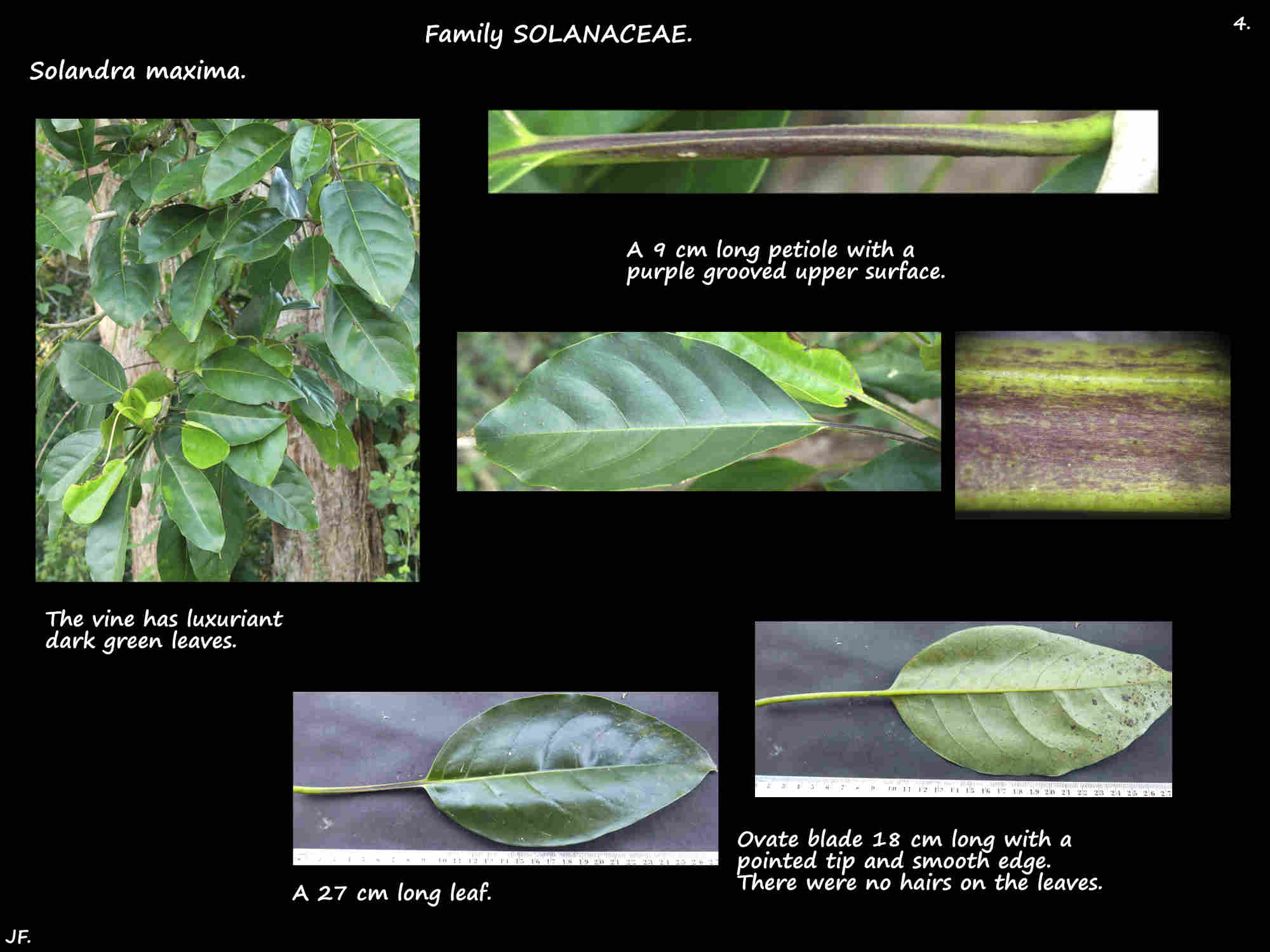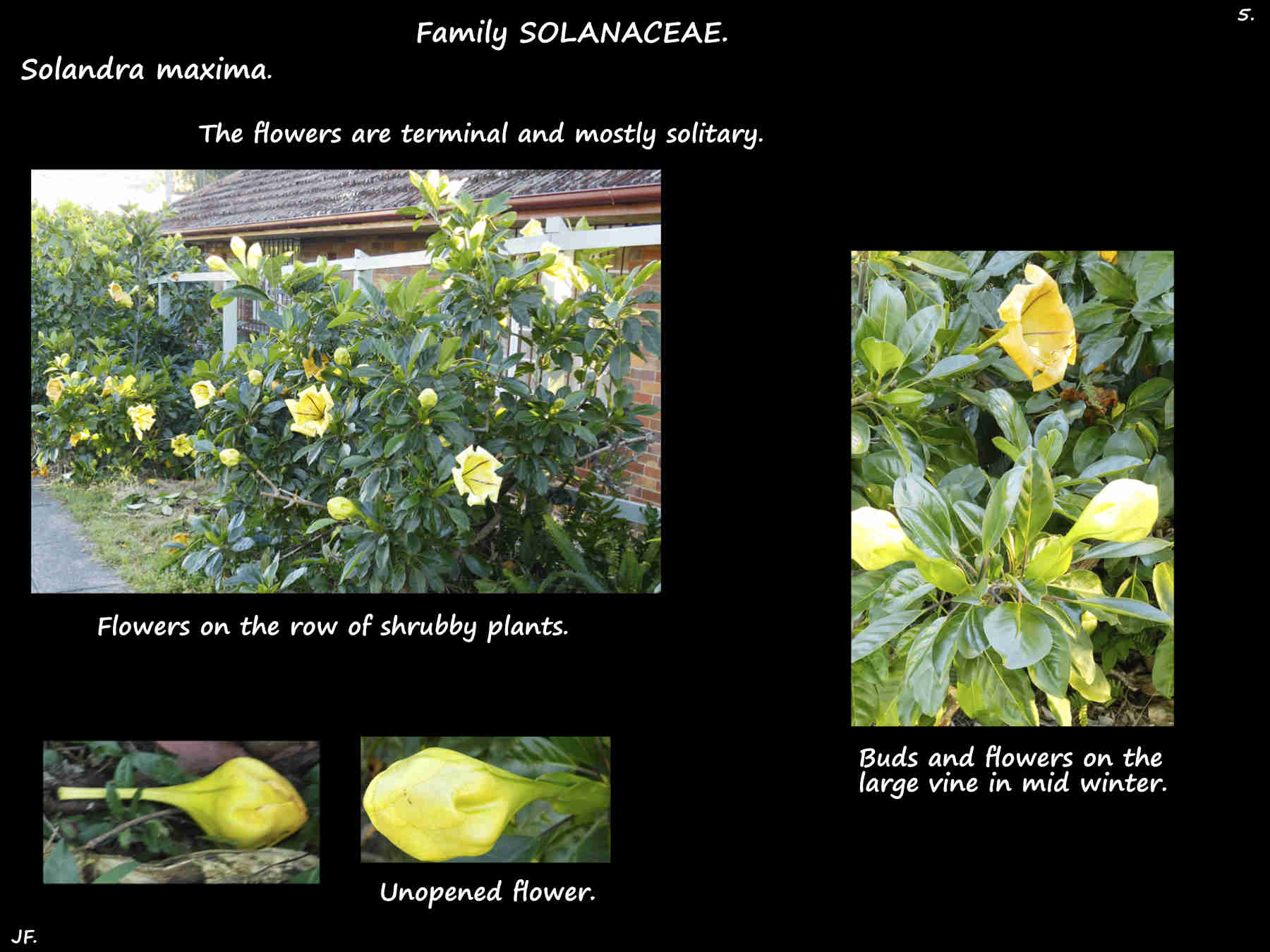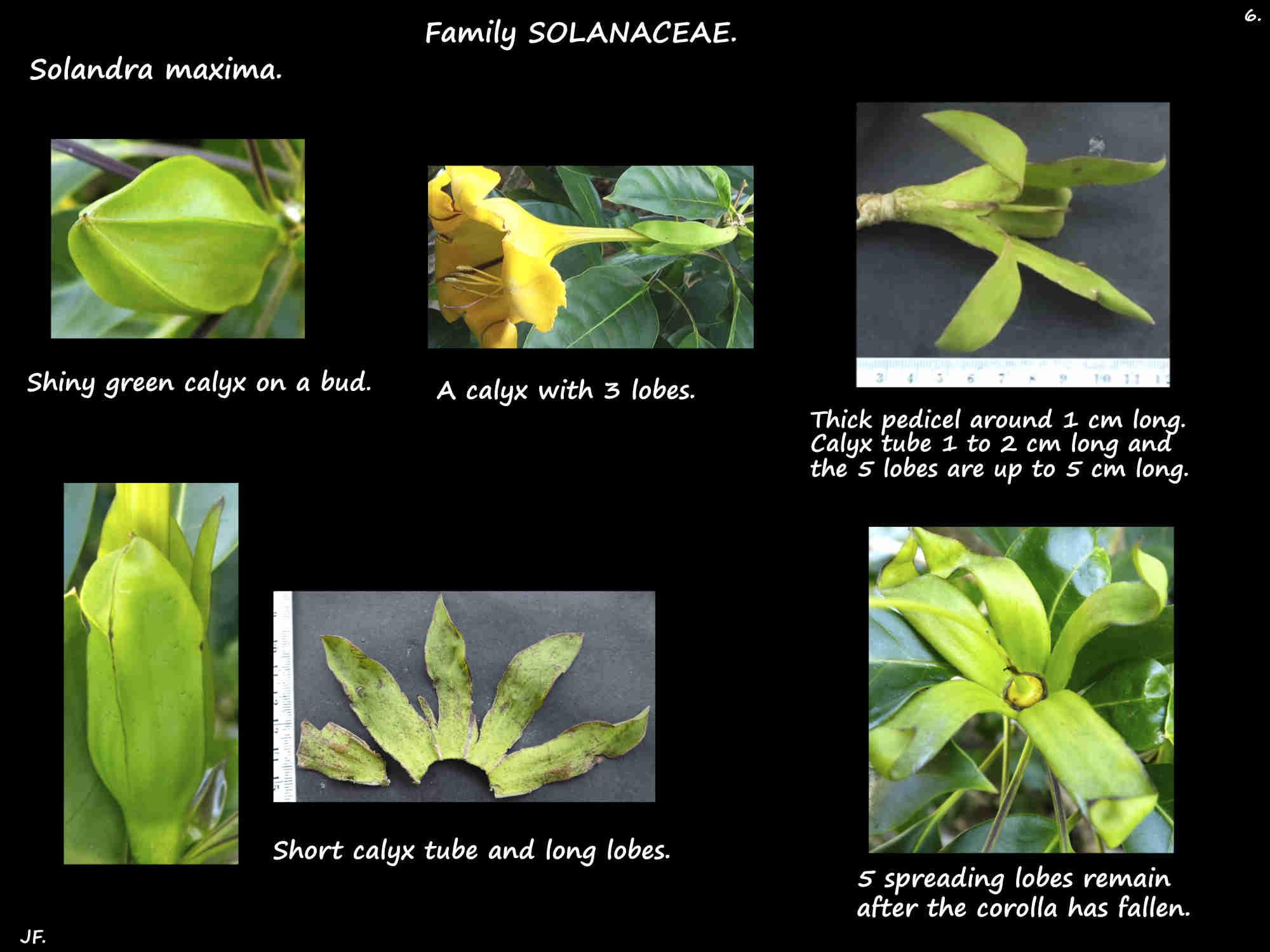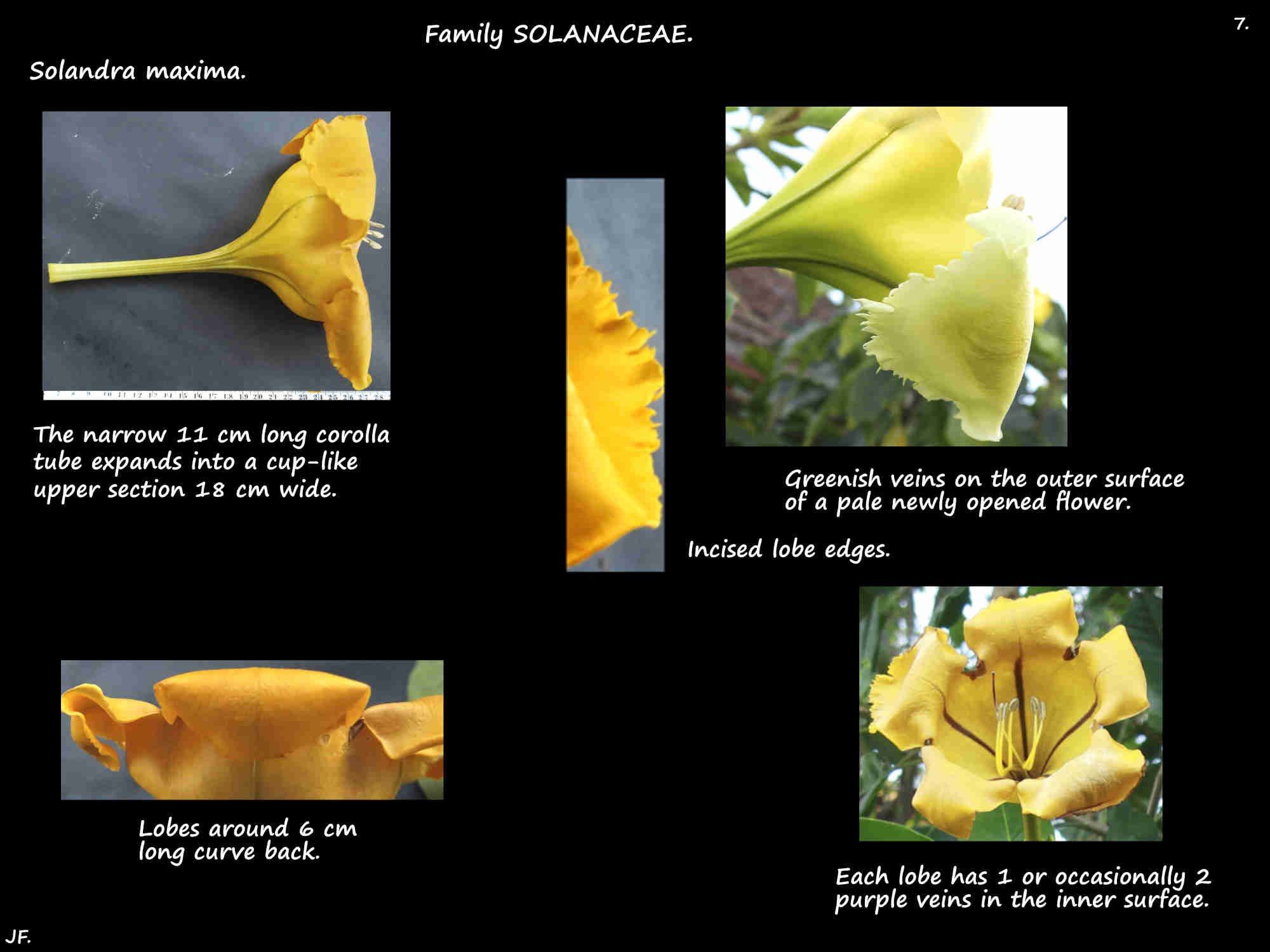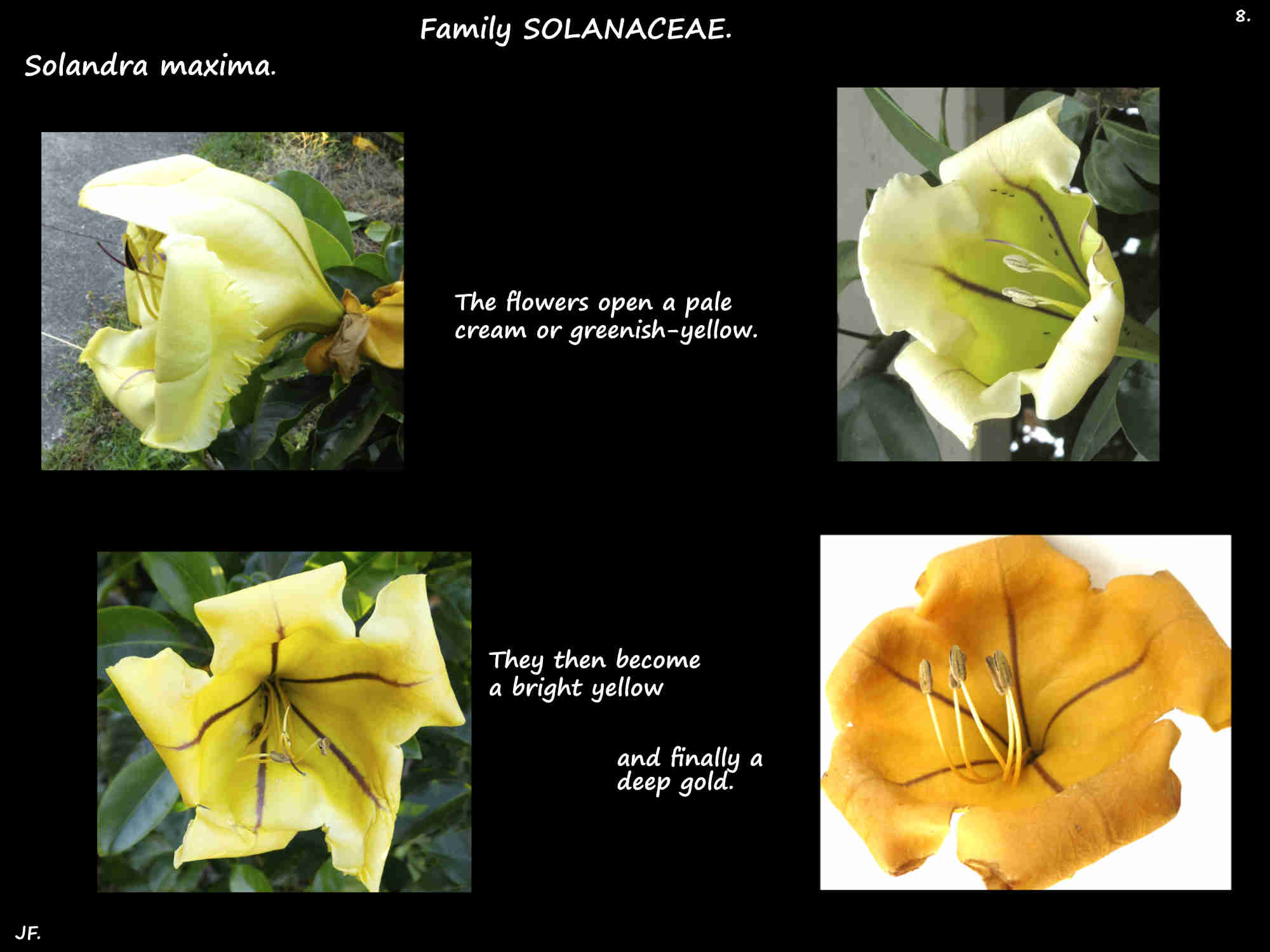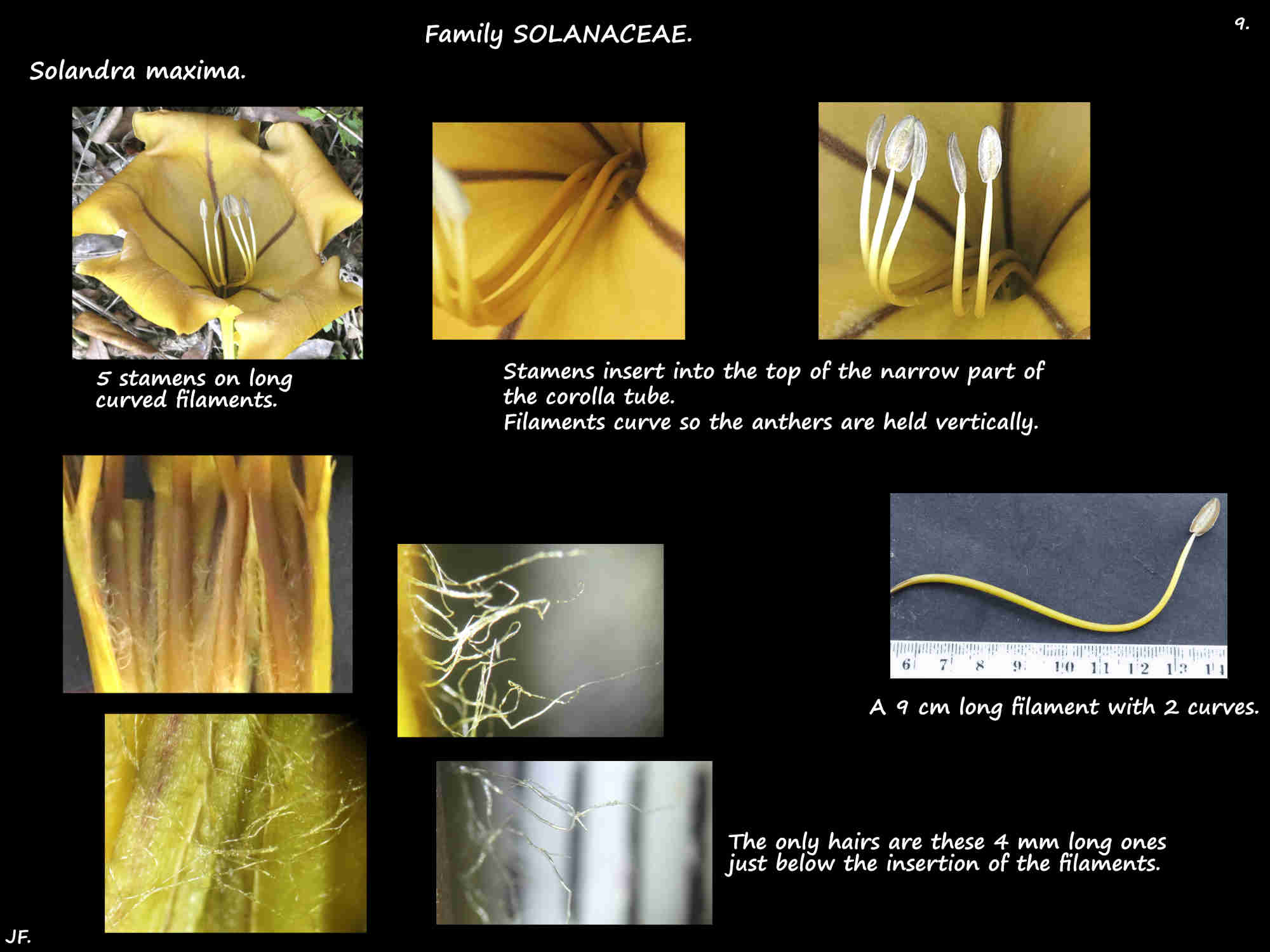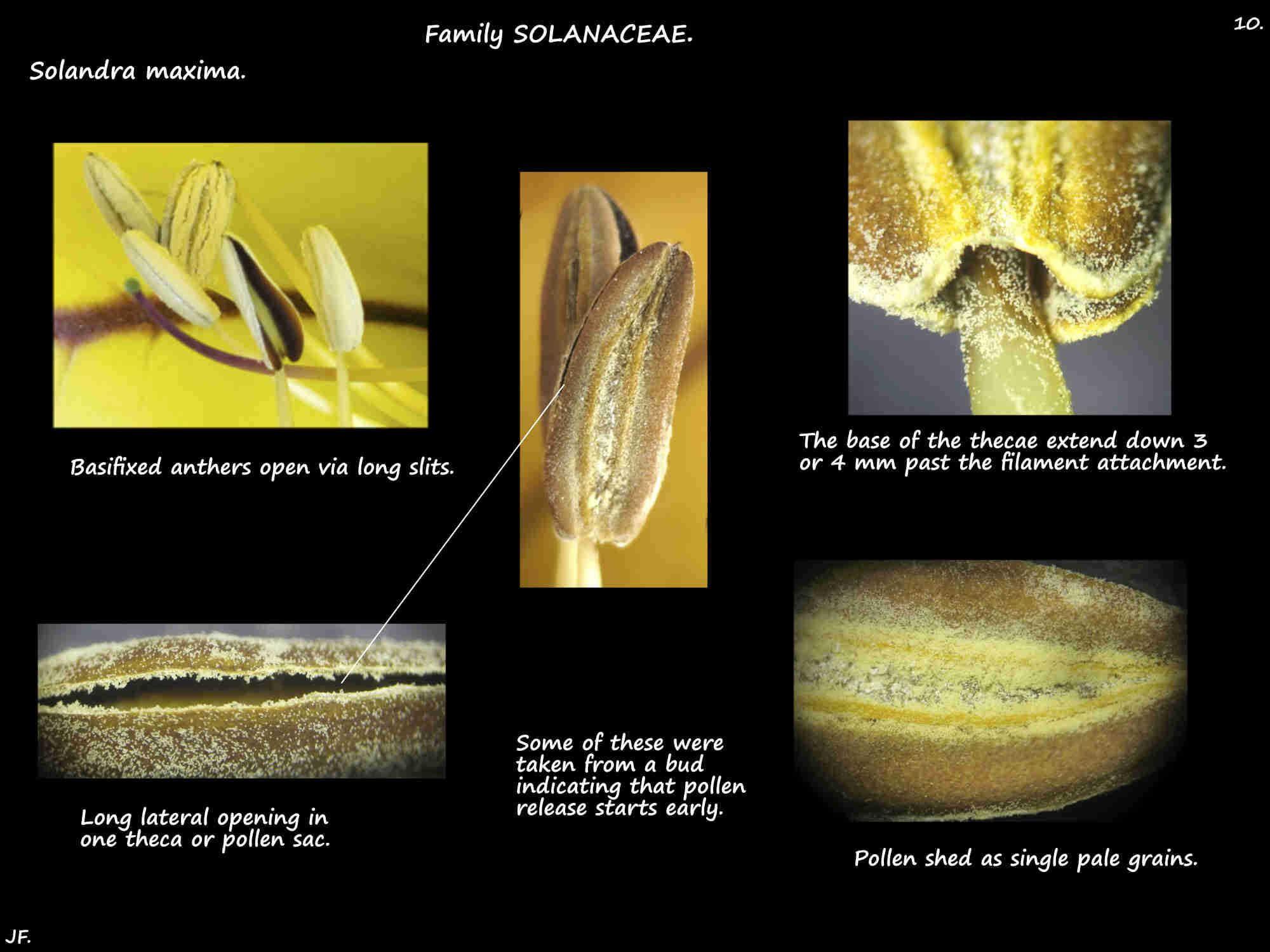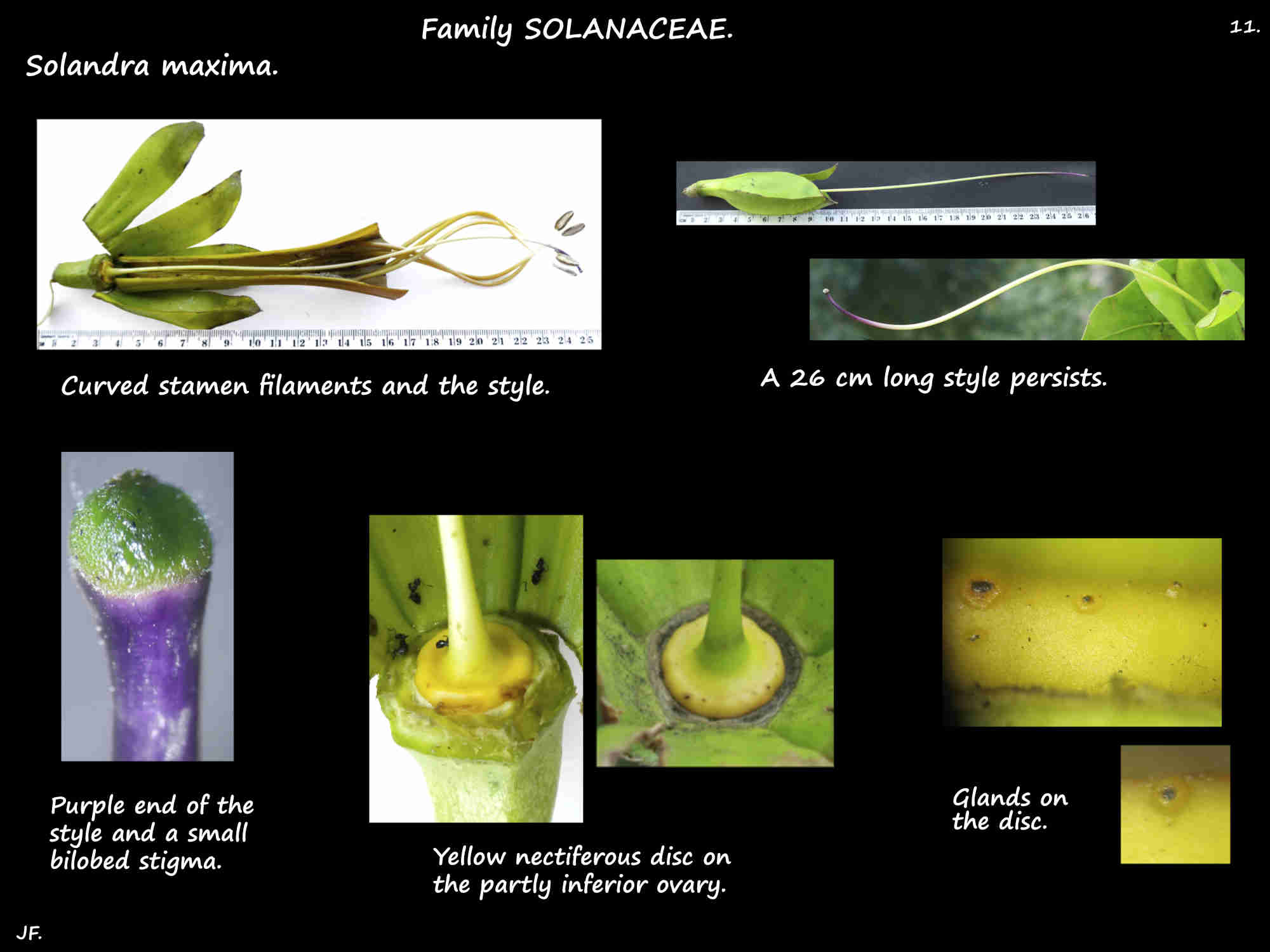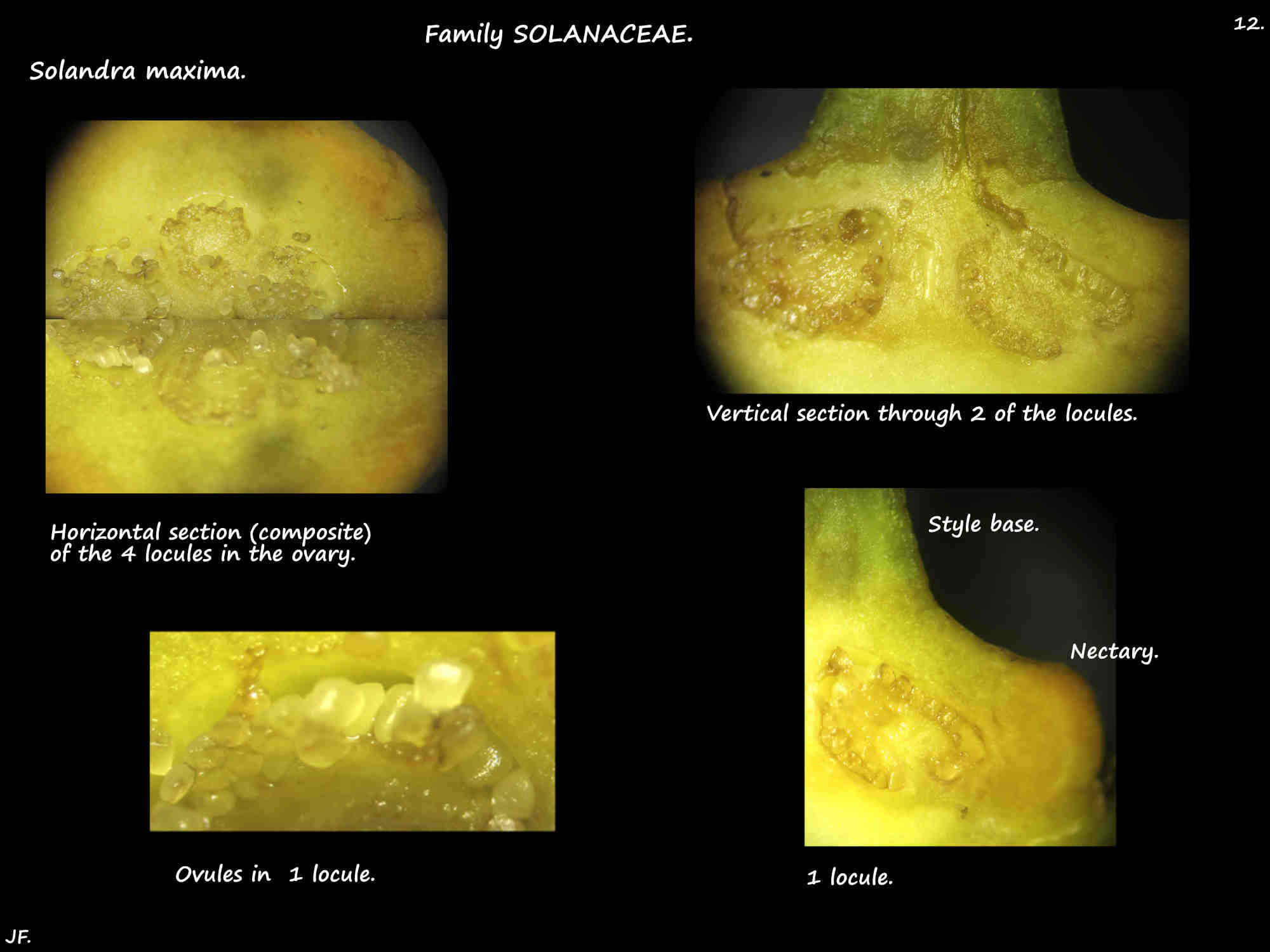Solandra maxima.
Family Solanaceae > Subfamily Solanoideae > Tribe Solandreae.
The Chalice vine genus has around 10 (16) species from South America.
Solandra maxima has been known as Datura maxima which also has the common name of Chalice vine.
S. maxima is the only species cultivated in Australia and is fairly common around Brisbane.
Also known as Cup of Gold it is naturalised in some parts of Australia.
In cultivation they are mostly seen as shrubs, usually pruned and 2 to 3 m high.
In untended areas they are vigorous vines that can climb up 30 m depending on what trees are present.
They remain rooted in the ground but by developing aerial roots they become partly epiphytic.
The soft woody stems have no hairs.
The alternately arranged leaves are on grooved petioles nearly 10 cm long.
The dark green leathery ovate blades are around 20 cm long by 10 cm wide.
They have a pointed tip, a smooth edge and may have a few hairs on the veins of the lower surface.
New leaves may have a purplish tinge.
Terminal inflorescences are mostly a single flower but there may be a few.
Up to 20 or 25 cm long they are on a short thick pedicel.
The green tubular calyx has 2 to 5 lobes up to 5 cm long.
The lobes may be of different sizes and shapes and they have no hairs.
The calyx remains around the fruit.
The corolla has a narrow tubular base around 10 cm long.
This expands abruptly into a cup-shaped section around 8 cm long and 10 to 15 cm wide.
There are 5 lobes around 6 cm long that curve backwards.
The tip edges may be smooth or shallowly incised.
Flowers open a pale cream or greenish-yellow, become bright yellow and finally a deep golden-yellow.
The midrib on the outer surface of the lobes is a greenish colour.
Internally each lobe has 1 (2) purplish line down the centre.
The 5 stamens are inserted at the top of the narrow part of the corolla tube.
The curved filaments, of slightly different lengths are around 8 to 10 cm long.
There may be long simple hairs just below where they insert into the corolla.
The basifixed anthers, around 1 cm long open through long slits.
There is a wide cup-shaped nectiferous disc around the base of the style and top of the partly inferior ovary.
The ovary, of 2 fused carpels has 4 locules each with numerous ovules.
The long thin style extends to or slightly past the anthers in the throat.
The end, with the small green bilobed stigma curves up.
Fruit are not seen here but are said to be ovoid or conical berries up to 7 cm wide.
J.F.

